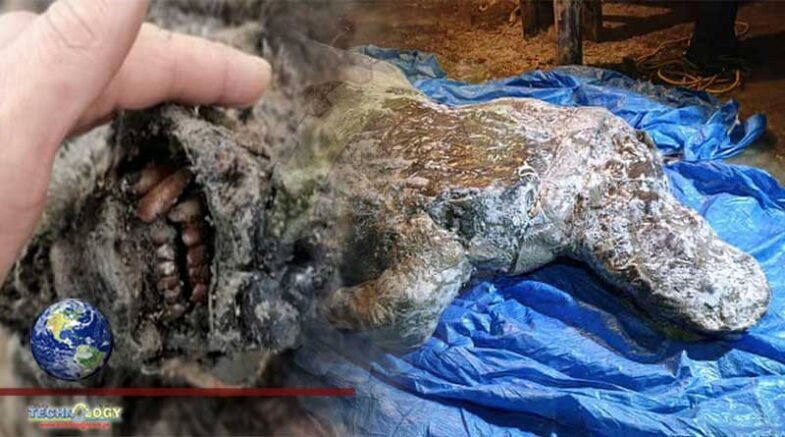A well-preserved ice age woolly rhino with its internal organs still intact has been recovered from the permafrost in Russia’s northern region.

A well-preserved ice age woolly rhino with many of its internal organs still intact has been recovered from the permafrost in Russia’s extreme northern region.
Russian media reported on Wednesday that the carcass was revealed by thawing permafrost in Yakutia in August. Scientists are waiting for ice roads in the Arctic region to become passable to deliver the animal to a laboratory for studies in January.
The carcass is among the best preserved specimens of the woolly rhino found to date. Most of the soft tissues are still intact, including part of the intestines, some thick hair and a lump of fat. Its horn was found next to it.
In recent years, as the ice inside the permafrost increasingly melts, across vast areas of Siberia because of global warming, there have been significant discoveries of mammoths, woolly rhinos and cave lion cubs. A foal – known as the Lena horse – alive 42,000 years ago was found in the permafrost in the Batagaika crater in Yakutia, Siberia.
Yakutia 24 TV quoted Valery Plotnikov, a paleontologist with the regional branch of the Russian Academy of Sciences, saying that the woolly rhino was probably three or four years old when it died. Plotnikov said the young rhino could have drowned.
Scientists dated the carcass from 20,000 years to 50,000 years ago. More precise dating will be possible once radiocarbon studies can be done at a laboratory.
The carcass was found on the bank of the Tirekhtyakh river, in the Abyisk district, close to the area where another young woolly rhino was recovered in 2014. Researchers dated that specimen, which they called Sasha, at 34,000 years old.
Originally Published at The Guardian
